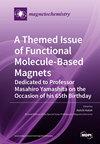莫迪红泥负载钴催化剂活化过硫酸盐降解氧氟沙星
IF 2.5
4区 化学
Q2 CHEMISTRY, INORGANIC & NUCLEAR
引用次数: 0
摘要
作为一种丰富的潜在危险废物,赤泥需要一种直接的资源管理方法。本文采用共沉淀法制备了一种负载钴的RM催化剂(Co-RM),用于过硫酸盐(PS)的有效活化。研究了其对氧氟沙星的降解性能及降解机理。扫描电子显微镜、X射线衍射仪和能谱仪的表征结果表明,钴成功地负载在RM表面,所制备的催化剂能够有效地活化PS。在15 mg/L OFL、0.4 g/L Co-RM、4 g/L PDS、3.0 pH和40°C温度的条件下,Co-RM/PDS体系对OFL的最大去除率为80.06%。自由基清除实验证实硫酸根是反应体系中的主要活性物质。通过气相色谱-质谱法进一步鉴定了OFL降解过程中的中间体,并提出了可能的降解途径。最后,用一阶动力学方程描述了Co-RM/PDS降解OFL系统中脱氟速率与时间的关系。这项工作报告了一种经济、环保的废RM使用解决方案,并为进一步探索RM基催化剂提供了研究基础。本文章由计算机程序翻译,如有差异,请以英文原文为准。
Modi-Red Mud Loaded CoCatalyst Activated Persulfate Degradation of Ofloxacin
As an abundant potentially dangerous waste, red mud (RM) requires a straightforward method of resource management. In this paper, an RM catalyst loaded with cobalt (Co-RM) was prepared by the coprecipitation method for the efficient activation of persulfate (PS). Its degradation performance and mechanism of ofloxacin (OFL) were investigated. The characterization results of scanning electron microscopy, X-ray diffractometer, and energy dispersive spectrometer showed cobalt was successfully loaded onto the surface of RM, and the catalyst produced could effectively activate PS. Under the conditions of 15 mg/L OFL, 0.4 g/L Co-RM, 4 g/L PDS, 3.0 pH, and 40 °C temperature, the maximum removal rate of OFL by the Co-RM/PDS system was 80.06%. Free radical scavenging experiments confirmed sulfate radicals were the main active substances in the reaction system. The intermediates in OFL degradation were further identified by gas chromatography-mass spectrometry, and a possible degradation pathway was proposed. Finally, the relationship between defluorination rate and time in the Co-RM/PDS degradation OFL system was described by the first-order kinetic equation. This work reports an economical, environmental solution to the use of waste RM and provides a research basis for the further exploration of RM-based catalysts.
求助全文
通过发布文献求助,成功后即可免费获取论文全文。
去求助
来源期刊

Magnetochemistry
Chemistry-Chemistry (miscellaneous)
CiteScore
3.90
自引率
11.10%
发文量
145
审稿时长
11 weeks
期刊介绍:
Magnetochemistry (ISSN 2312-7481) is a unique international, scientific open access journal on molecular magnetism, the relationship between chemical structure and magnetism and magnetic materials. Magnetochemistry publishes research articles, short communications and reviews. Our aim is to encourage scientists to publish their experimental and theoretical results in as much detail as possible. Therefore, there is no restriction on the length of the papers. The full experimental details must be provided so that the results can be reproduced.
 求助内容:
求助内容: 应助结果提醒方式:
应助结果提醒方式:


